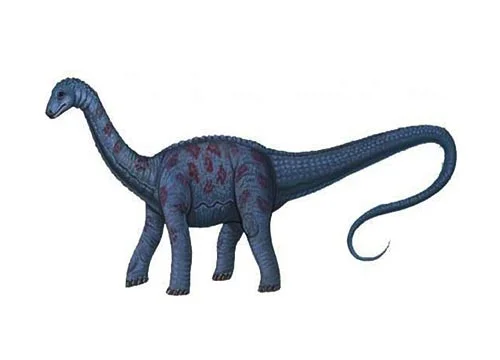Haplocanthosaurus (Simple spined lizard)

Hap-loe-kan-foe-sore-us
John Bell Hatcher - 1903
Herbivore
Estimated up to 25 meters long
Sauropod
H. priscus (type), H. delfsi
USA, including Colorado and Wyoming - Morrison Formation
Late Jurassic, 155-150 million years ago
Haplocanthosaurus Facts
Haplocanthosaurus, meaning “simple-spined lizard,” is a genus of sauropod dinosaur that lived during the Late Jurassic period, approximately 155 to 150 million years ago. The fossils of Haplocanthosaurus have been found in the western United States, primarily in Colorado and Wyoming.
Haplocanthosaurus was a large, long-necked herbivore, and is estimated to have reached lengths of up to 25 meters (82 feet). Despite its size, it is believed to have had a relatively light build compared to other sauropods, which may have allowed it to move more quickly and efficiently.
One of the most distinctive features of Haplocanthosaurus was its spines, which were relatively short and simple compared to those of other sauropods. The spines were located on the back and tail of the animal, and may have been used for display or as a means of defense against predators.
Haplocanthosaurus is known from several partial skeletons, but no complete specimens have been found. Like other sauropods, it likely had a long neck and tail, and walked on four pillar-like legs. It had a relatively small head with blunt teeth that it used to strip leaves from plants.
Despite its relatively simple spines, Haplocanthosaurus was an important part of Late Jurassic ecosystems, and likely played a role in shaping the vegetation in its environment through its feeding habits. Its fossils provide valuable insights into the diversity and ecology of this group of dinosaurs, which were among the largest and most successful animals to ever live on land.



